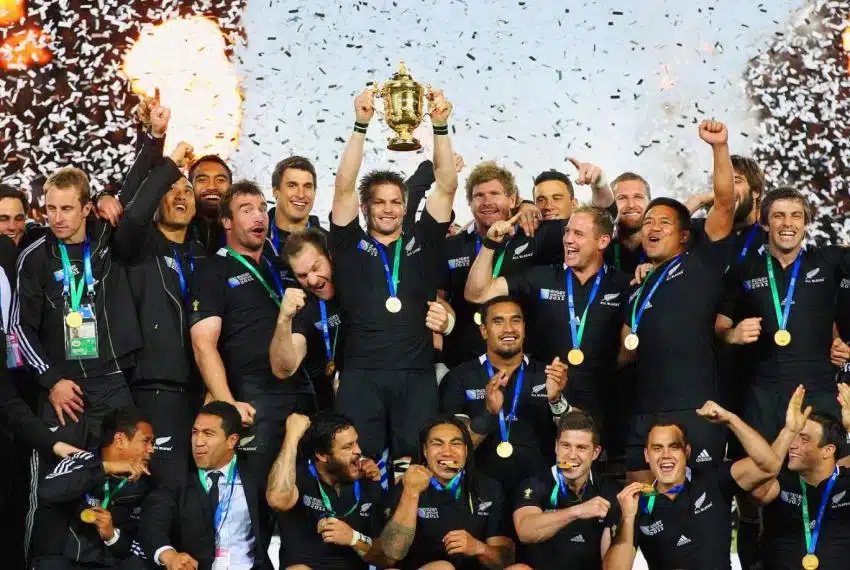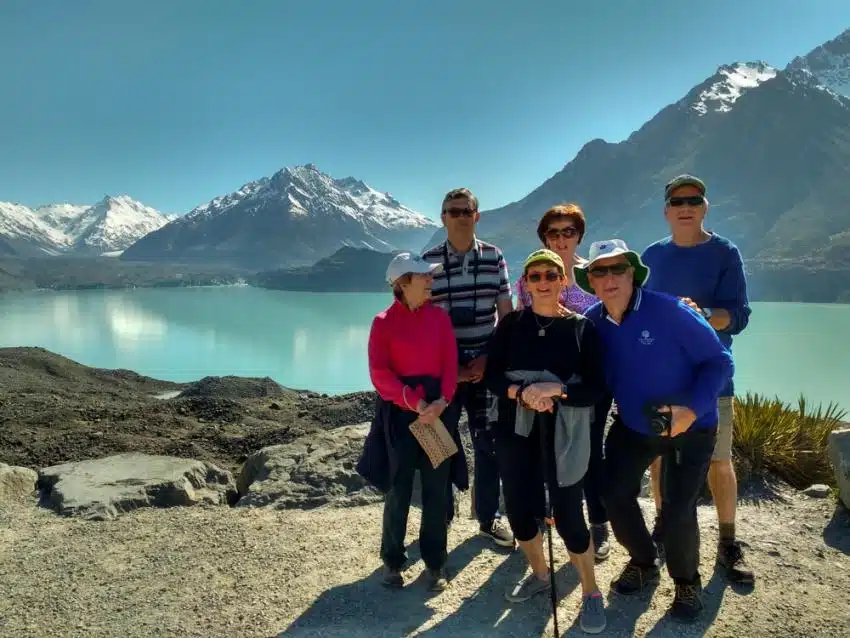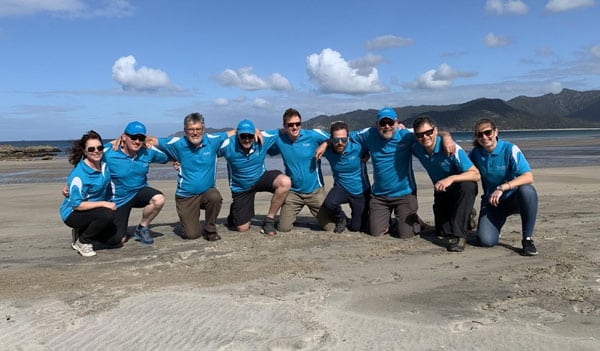We Kiwis live in a relatively young country compared to most of our overseas mates. There was a tourism campaign a few years back that called us ‘the youngest country on earth’ – and, in terms of when we actually became ‘New Zealand’, we’re probably not far away! While we might be young, we’re also pretty proud of our rich culture and history. From the ancient myths and legends of our indigenous Maori people to tales of colonization by the British, it’s our unique kiwi history that has helped to make New Zealand the vibrant place to live it is today.
As Kiwi kids growing up, learning about the history and culture of New Zealand was an important part of our education. Read on, we’ve condensed it a fair bit to give you a feel for the history and culture of our country (it might help you to love NZ nearly as much as we do!)
In the beginning…
Over 1000 years ago, when Europeans still thought you could fall off the edge of the world, Maori left Polynesia in waka (canoes) and set out to explore the sea around them. On voyages like these, they discovered a land they named Aotearoa (The Land of the Long White Cloud) – what was to later become New Zealand. Legend has it that Kupe, a famous explorer, used the stars and ocean currents to navigate his way from his homeland of Hawaiiki and become the first person to make landfall. If you’ve never heard of Hawaiki, there’s a good reason – it’s never actually been found. But there are heaps of similarities between Maori and other Pacific Island cultures, so it’s thought that it was a place somewhere in Polynesia.
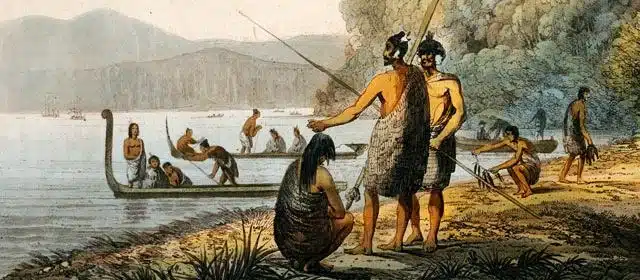
Maori Legend of Aotearoa
Maori are the best storytellers of us Kiwis; Maori whakapapa (genealogy) and culture is passed down from generation to generation orally through song and speaking – nothing was really written down.
A brief history of New Zealand isn’t complete without one of our favourite Maori legends, the story of Maui fishing up the North Island. Kiwi kids are often taught this tale when they first arrive at Primary School. It goes a bit like this: Maui, a young Polynesian boy, was always left out by his brothers because he was too cunning and smart for them. One day he over-heard his brothers planning a fishing trip, so he carved a magic fishing hook out of an ancestral jawbone and hid in the hull of a waka (canoe). When they got far out to sea, he jumped out of hiding and flung the magic hook into the sea as he recited a karakia (prayer). His line tensed and the waka started to accelerate across the water. Maui’s brothers begged him to cut the line but Maui stayed strong and yanked up the giant fish, which was to become the North Island of New Zealand, Te Ika a Maui (The Fish of Maui). It’s very possible Maui paved the way for that good old Kiwi ingenuity we are famous for today.
Check out a map of New Zealand. Don’t you think the North Island looks like(remove) a heap like a fish? The tail is at the top and the head is at the bottom. Our other islands also have legends: the South Island is Maui’s waka, and Stewart Island is Maui’s anchor.
Maori Way of Life
As the ‘tangata whenua’ (indigenous people) of New Zealand, Maori make up 16.5% of our 5.2 million people and their customs and history are a core part of New Zealand today. You’ve probably seen the All Blacks play, right? The haka (war dance) they perform before the game is an old Maori custom that used to be performed before going into battle to intimidate their opponent. We always reckon facing a powerful, united team stamping their feet fiercely and shouting words of war must be pretty hair-raising!
When you visit New Zealand, you’ll get a first-hand experience of what Maori people call ‘manaakitanga’ (hospitality). There are Marae (tribal meeting grounds) dotted around the country that are open to the public and visitors. On a marae tour, you’ll get an insight into the day to day lives of Maori; you’ll be greeted by a powhiri (welcoming ceremony), witness traditional art forms like weaving and carving, learn of local legends and maybe taste a hearty hangi (feast cooked underground).
The Arrival of Europeans
Abel Tasman, a famous explorer from Holland, was the first European to set eyes on New Zealand in 1642. One of our most beautiful National Parks, Abel Tasman, is named after him. But it was Captain James Cook who discovered and mapped out New Zealand in 1769, paving the way for the British, who finally colonized the country. Now, you’ve probably heard a few stories about the British way of colonization but, for one reason or another, the colonization of New Zealand was totally different – both sides were very interested in trade and exchange with each other from the very start. First came the whalers, sealers and missionaries who lived alongside Maori, then traders and pioneers, who had the relentless task of clearing the land ready for farming. We reckon some of the ‘can do’ attitudes of Kiwis today evolved from these very guys. Unfortunately, the British didn’t just trade blankets and food with the Maori; guns and disease were also introduced resulting in a rapid decline of the indigenous population.
The Treaty of Waitangi
We might be a very peaceful country now but back in our early years New Zealand was a lawless nation, so much so that the capital at that time, Russell (up in the Bay of Islands) was known as “the hell hole of the Pacific.” These days it’s a pretty seaside village of charming colonial buildings and historical sites (we would even go so far as to say it’s one of our favourite places in the country; and many of our tours go there!)
But, back then, a group of Maori tribes had become sick of being cheated and stolen from by large numbers of immigrants, so their chiefs lobbied King William IV to start protecting and recognizing their tribes. After talks between Maori and British, a treaty was written in English and then translated to Maori. The treaty gave the British crown rule over New Zealand, and, in return, let the Maori keep their land, titles and right to sell their land. It also made Maori and British equal citizens. On 6 February 1840, the Treaty of Waitangi was signed by the Queen’s representatives and 500 Maori chiefs in total went on to sign the treaty.
Plenty of controversy, due to a heap of translation issues, has broken out since then: the brutal land wars of the 1840s resulted in a massive loss of lives for both the Maori and British. They also meant most of the country’s most breath-taking New Zealand scenery fell into British hands. In 1975 the Waitangi Tribunal was created and a number of crimes against Maori tribes have now been compensated, with a number still being disputed to this day.
Today, the Waitangi Treaty Grounds – the place where the most important document in New Zealand history was signed – is an awesome place to visit. It is also a piece of prime real estate with million dollar views over the Bay of Islands. We reckon you would be missing out if you came to New Zealand but didn’t visit Waitangi, so plenty of our tours visit this place as well.
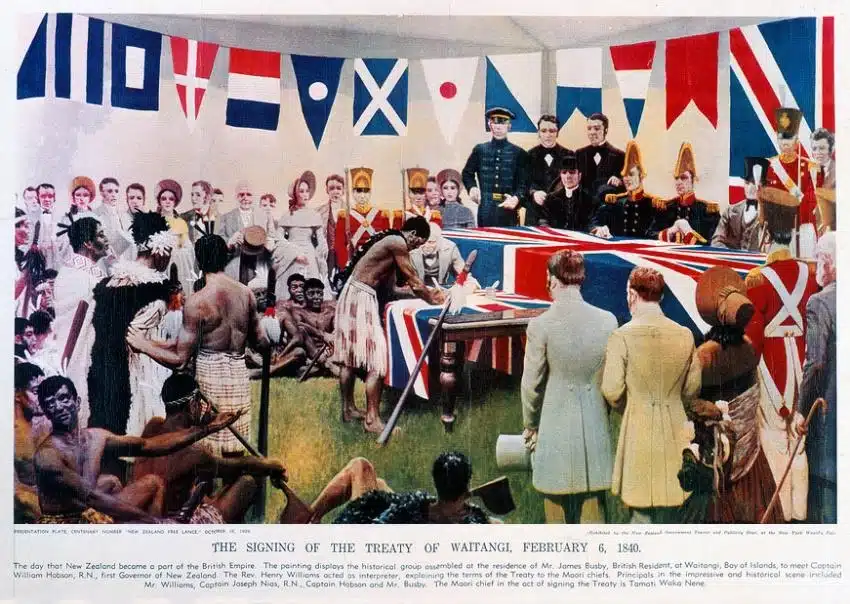
Kiwis Today
We’ve got heaps of respect for the strong ties that the Maori have for Mother Nature and whanau (family), and we also admire the tough, never-give-up attitude of those early European pioneers. Today, Kiwis are known as strong, outdoorsy, innovative and warm people; traits that we reckon have been handed down from the early days. Through the years, heaps more ethnic groups have arrived in New Zealand, bringing new traditions, yummy food, and creating more of a colourful, multi-cultural feel to the country; especially in the big cities.
If you’re thinking about coming to New Zealand, make sure you get a feel for our culture and history by getting to know plenty of our friendly locals. Our MoaTrek guides are all Kiwis, so you’ll learn some of the local slang, plenty of local secrets and meet some of our mates when you explore New Zealand with us.
